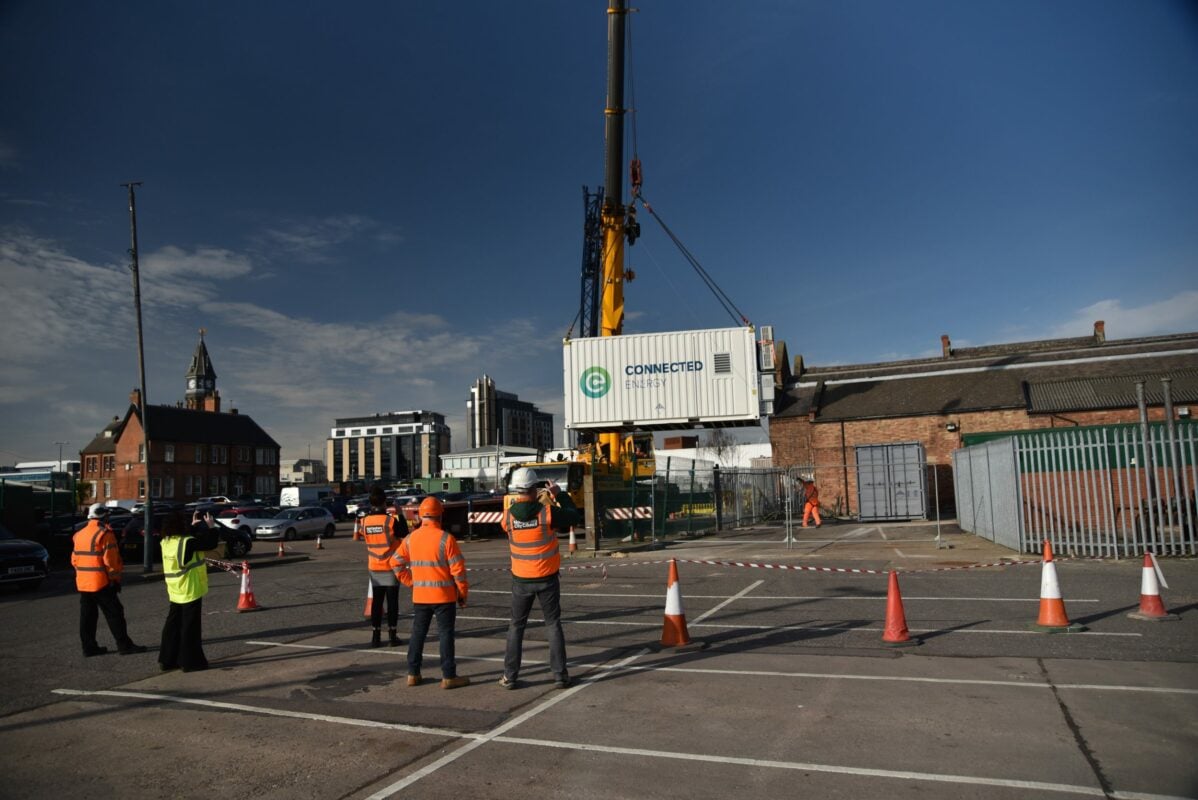
Located in Eastcroft, the municipal depot integrates 40 vehicle-to-grid (V2G) bi-directional chargers with three solar arrays with a combined generation of 176kwp. Image: Connected Energy.
Two of Connected Energy’s second life 300kW battery energy storage systems (BESS’s) will support a depot housing over 200 electric fleet vehicles in Nottingham become a “full building energy ecosystem.”
Connected Energy utilises the remaining 75-80% capacity of end-of-life electric vehicle (EV) batteries and re-uses them as BESS’s.
“Our reasons for choosing Connected Energy were two-fold,” said Steve Cornes, principle energy projects officer for Nottingham City Council.
“It was important to us that we found a UK supplier with an emphasis on ongoing maintenance, parts and warranty. The use of second life batteries was also a factor that provides us with a less carbon-intensive product.”
Located in Eastcroft, the municipal depot integrates 40 vehicle-to-grid (V2G) bi-directional chargers with three solar arrays with a combined generation of 176kwp.
The two 300kW BESS’s will support the site by storing the energy generated by both the solar array and V2G technology, which will then be used to directly power the site during peak tariffs.
This system will also allow the site to redistribute surplus energy back to the grid and provide power to the charge points to support load balancing.
“The systems will allow us to ensure production costs of electricity will be negligible, allowing us to peak shave so that we can avoid high electricity tariffs and give us the opportunity to trade electricity back to the grid,” added Cornes.
“Balancing supply from solar PV, which can be intermittent, is an integral part of the project and the battery will help to administer the G99 controls.”
As all installed technologies at the depot are interoperable, the project’s next step is to develop and install an open-source software to monitor, control and predict weather forecasting adding further flexibility to the depot’s energy use.
“Our main aim is to reduce the carbon intensity of the operations on site. Projects such as this are critical as we work towards becoming Carbon Neutral by 2028 and this will demonstrate what is possible – both for the City Council itself but for similar buildings throughout the UK,” continued Cornes.
“As the City Council fleet transitions to electric vehicles, including large vehicles such as refuse lorries, we will be using the battery energy storage system to prop up the grid. By using intelligently managed BESS and V2G, the use of on-site solar energy can be maximised, and the depot will effectively be able to isolate itself from the grid during peak periods and avoid peak tariffs.”
